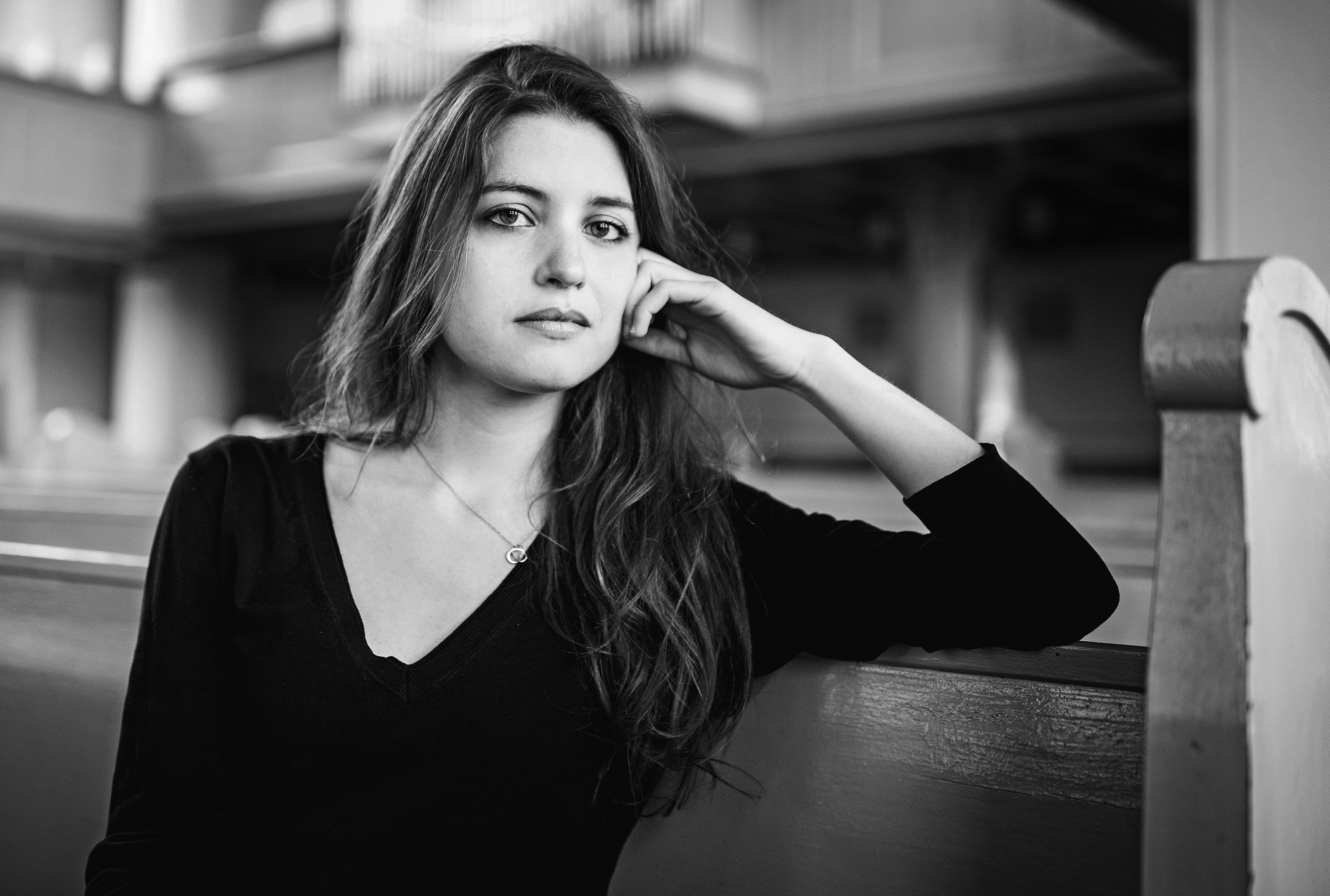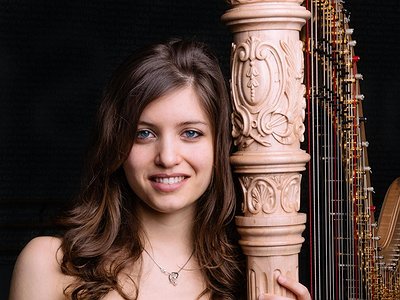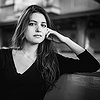Name: Marion Ravot
Nationality: French
Occupation: Harpist
Recent release: Marion Ravot's single “Valse Romantique", a piece by Claude Debussy arranged for the harp by Marion herself, is out via Solaire.
Tool of Creation: Harp
Type of Tool: Stringed musical instrument
Country of origin: Probably the region of ancient Persia, Mesopotamia, Egypt
Became available in: Around 3,000 BCE.
If you enjoyed this interview with Marion Ravot about the harp and would like to explore her work and various projects in more depth, visit her official website. She is also on Instagram, and Facebook.
What was your first encounter with the harp? What was it about the instrument that drew you in?
My first encounter with the harp actually took place in books. I don't come from a family of professional musicians. We had a piano at home, so I had to play that instrument. And although I did like it, it was not my instrument. But I did love to read and there always seemed to be someone playing the harp in books. I was quite young and that was my first encounter.
Of course, this was only the harp as a concept. When I was 11 we rented a small celtic harp with no pedals. The first time I heard the sound of the harp live was when I put my fingers on it.
But my first encounter with the regular full sized harp was when I heard Marielle Nordmann who is a very famous French harpist. I remember her playing the Boieldieu concerto, which is one of the big harp concertos and I was mesmerised. I couldn't believe how beautiful it was, how someone could play like that.
Just like any other instruments, the harp has a rich history. What are some of the key points from this history for you personally?
When it comes to key points, I would say for sure the introduction of the pedals. It is only through the pedals that we can play most of our repertoire.
The harp used to have one string per note (meaning 12 strings per octave). Today’s concert harp has only 7 strings per octave and 7 pedals, one for each note of the scale. Each pedal has three levels. If you put all the pedals in the middle level, you put your harp, as it were, in neutral mode, meaning you're in C major and you get all the white keys of the piano. If you want to get the black keys, in order to modulate, you can use your feet. Each string can therefore produce 3 different notes, depending on the pedal setting.
Debussy’s Danse Sacrée et danse profane, which I'm recording at the moment for Solaire Records, was actually composed for the chromatic harp (with no pedals) as a commission to showcase this instrument at a time when the chromatic and pedal harps were in competition. This piece has been “arranged” for the pedal harp and is today part of our traditional repertoire.
There are more changes. The strings themselves have changed a lot in the 20th century. Also, the harp has become much bigger and as a result, we as harpists can create a much bigger sound. The strings are more tense, which makes it more tiring to play, but you do get a much bigger sound.
Are there other players whose work with their instrument you find inspiring? What do you appreciate about their take on it?
There are many harpists I admire a lot. But rather than go through them all, I'll take this opportunity to speak about some of my teachers, since I have been very lucky with them. Not only did I have great mentors, but I also had them at the right time for me.
Isabelle Moretti, with whom I studied in Paris Conservatoire, and her teacher Germaine Lorenzini really developed their own approach to playing the harp. They really thought deeply about how to play the instrument technically and musically, how to shape a phrase, how to use the weight. This taught me a lot about how to create a nice sound.
I then went to America and studied with Nancy Allen at the Juilliard School. Her approach to the instrument was all about being relaxed. She's so relaxed at the instrument and performing on stage.
And then I studied with Marie-Pierre Langlamet at the Karajan Akademie of the Berlin Philharmonic, who is absolutely incredible. She also has a very personal way of producing sound and taught me a lot about timing and flexibility in playing.
There are of course many other harpists I admire but those are some of the ones to whom I owe a lot.
When talking about electronics devices, we often think about their features. But the harp is a complex device, too. What are some of its standout features from your point of view? How would you describe its sonic potential?
Well, first of all, we have a lot of limitations unfortunately from the pedal. Those are harmonic limitations: we can't modulate as easily as we could on a piano. At any given time, you only have seven notes available per octave, so you have to choose. And then you're also only working with 2 feet. In short, modulating can be a bit of a problem.
We also have some limitations when it comes to volume. Each instrument has a volume limit that can easily be reached when we try to project the sound. Over this limit, the sound get very hard and saturated. The challenge is to manage to project while not going over the limit of the instrument, limit that of course varies from one harp to another.
Another limitation can be the direct contact you have with the strings as a harp player. Meaning, the quality of your skin has a huge impact on the sound you create. In a way that's great because it makes your sound very personal, depending on the shape of their fingers and the quality of your skin. Unfortunately, the less you practice, the nicer your sound will be because your skin will be softer.
Talking about the harp, one of the big challenge from my perspective is the legato. Because we pluck the strings, we can not sustain the sound. So to hold the legato - to hold the phrase - is very hard. I'm very jealous of string instruments or wind instruments that can sustain a note or even create crescendo or vibrate a long note. Harpists have to compensate for this. We have to think extra legato in order to have at least a bit of that line feeling.
Oh and yes, of course resonance. When you pluck a string, it may ring for a quite some time, longer than you would want to. So the challenge becomes to play harmonically clean. We have to muffle as we go the notes that don’t belong anymore in the new harmony. We therefore have to almost “play” (place) the string twice (first to play it, then to muffle it) and that can become gymnastic, especially in Baroque music.
What are specific challenges in terms of playing the harp?
The harp is a polyphonic instrument. You use your two hands, but also your feet for the pedals. So when playing, all your four limbs are active.
The limitations of the pedal system can make modulating feel like harmonic nonsense. When going from one key to another, you sometimes have to use enharmonic. For example using a A flat instead of G sharp, although you are in a key were A flat has nothing to do. This wouldn't make sense for any other musician harmonically.
Another thing that is a challenge with the harp is the use of weight. It's funny, when I was still studying in Paris, one of my teachers was always talking about the importance of “playing organic”. Organic - she kept repeating that word all the time. At the time it really didn’t make sense to me. And now I see myself repeating the same thing to my students at the University constantly. Because really, for music to make sense, for a phrase to make sense, you need to link it to the laws of nature. And gravity (suspension/weight), as well as tension/relaxation are some of them.
When you go up, you need to come down. A phrase that goes up is going to have to slow down as you reach the acme, where you have a moment of suspension, and then it will accelerate again on the way down. Of course, I'm exaggerating, but this kind of feeling of ups and downs is very important in music - for me at least. A given note in a given dynamic can change completely character and meaning depending on the weight (or lack of) that you play it with.
For “horizontal instruments” like the piano or to some extent the violin, if you want use the weight, you can use the weight of your own body or of your arm/bow on the instrument. But with the harp, we have the problem that our strings are vertical. If we were to put our weight on the instrument, then we would slide along the strings. So the challenge is to find a way to still put the weight on the string without sliding.
What does playing a new instrument feel like? What do you enjoy about it? What are your own physical limits and strengths?
You have a direct contact with the strings. Which, to me, effectively means you have a direct contact with the sound, which I love. And also by hugging the instrument and having the resonance body against your knees and shoulder, you really feel the vibrations. 
[Marion Ravot Interview Image by Hajo Müller / Solaire]
Could you describe working with the harp on the basis of one of your pieces, live performances, or albums which are especially dear to you?
I can talk about the arrangements on the CD I'm currently recording. One of the composers included in the program is Bach.
Of course, Bach never composed for the harp, he wrote for the harpsichord. That said, I think his pieces work really well on the harp simply because a harp like the harpsichord is a plucked instrument. Again, the issue is that playing this music harmonically clean is hard.
What I really enjoyed about the process of recording it is that because we could do as many takes as we wanted, I could use crazy fingerings in order to muffle. Which would be too risky to do during a concert.
How would you describe your personal style of playing the harp?
I am not trying to give a “groundbreaking” performance. What I am trying to do is to be faithful to the composer's intentions and to create something beautiful that also makes sense musically. Which has everything to do with what I just talked about: The weight, creating tension and relaxation, the arch of the harmony …
I think I'm quite traditional. But in a good way for me.
How would you say does the harp interact with other instruments or ensembles and groups you're part of?
I play a lot in orchestras. Actually, one of the things I love about the harp is that we it's a polyphonic instrument. Meaning, as harpists we can play pieces on our own, without accompaniment. But at the same time, we are an orchestral instrument. And playing within an orchestra is something I really enjoy. It gives us access to musical masterworks, and put us in contact with other musicians, which is a great learning opportunity.
The harp being often on its own, we are entirely responsible for the full sound of our section. Sometimes, that can feel a bit lonely, but more often than not, it gives us just a little more freedom.
The harp is often used as a colour in important moment or as accompaniment to the melody, which are two roles I enjoy.





